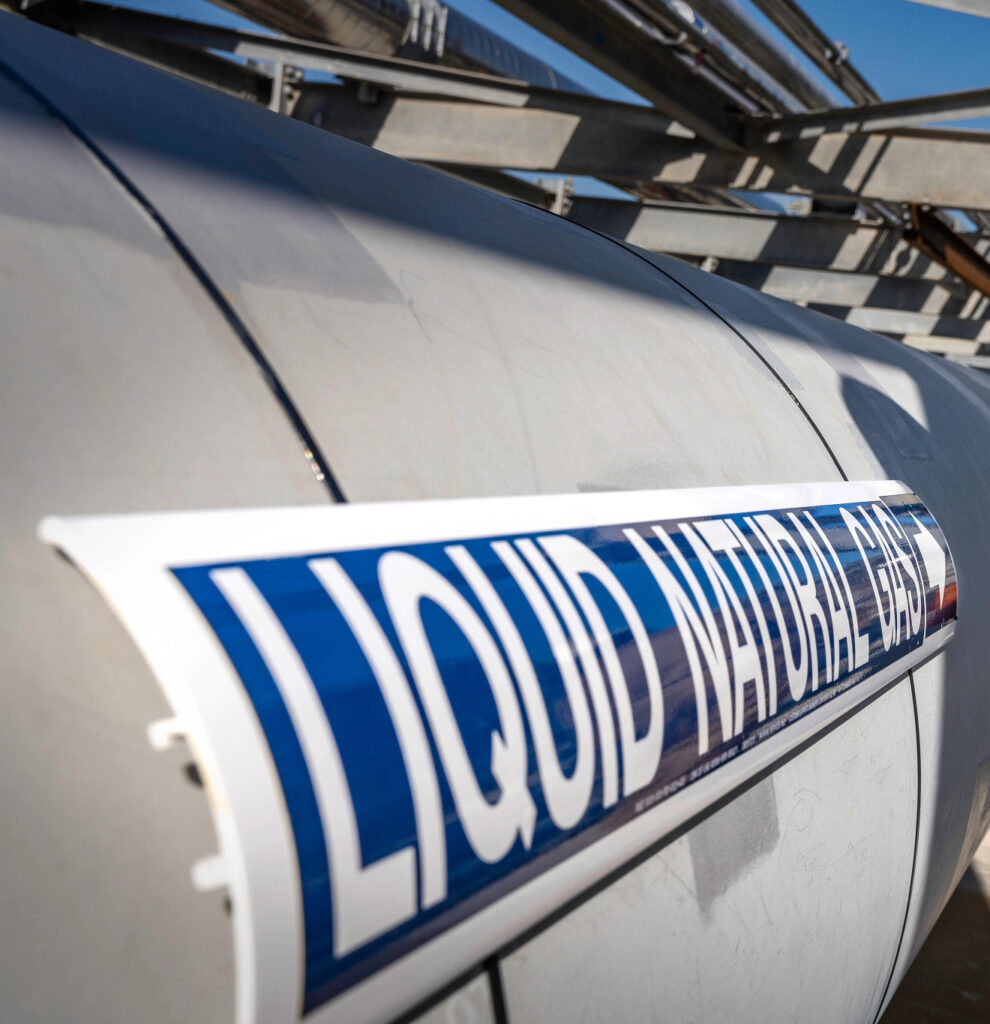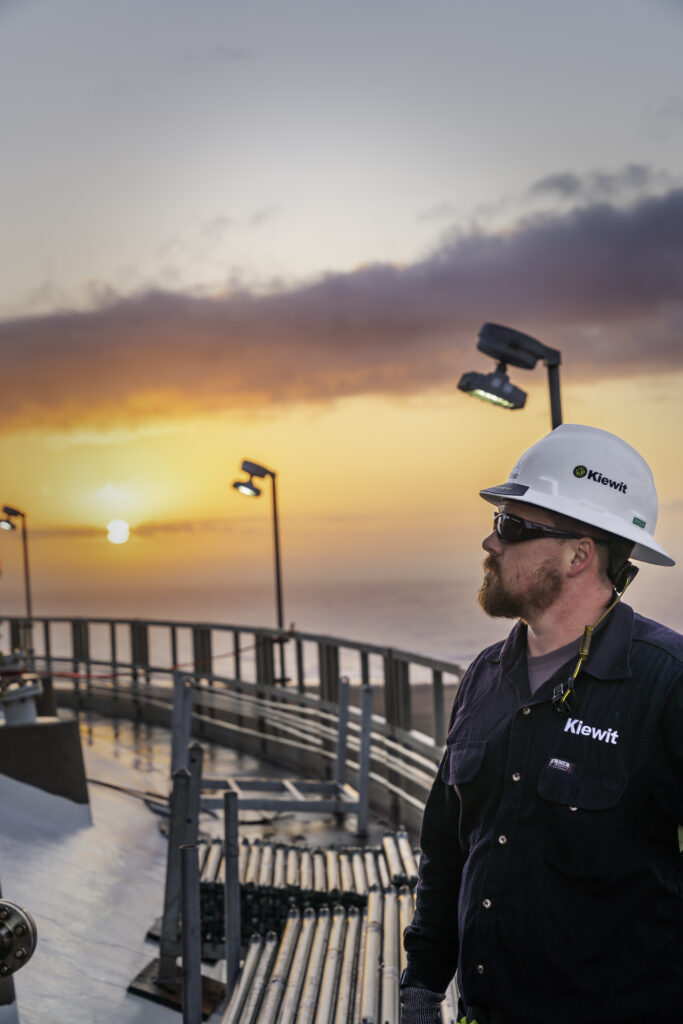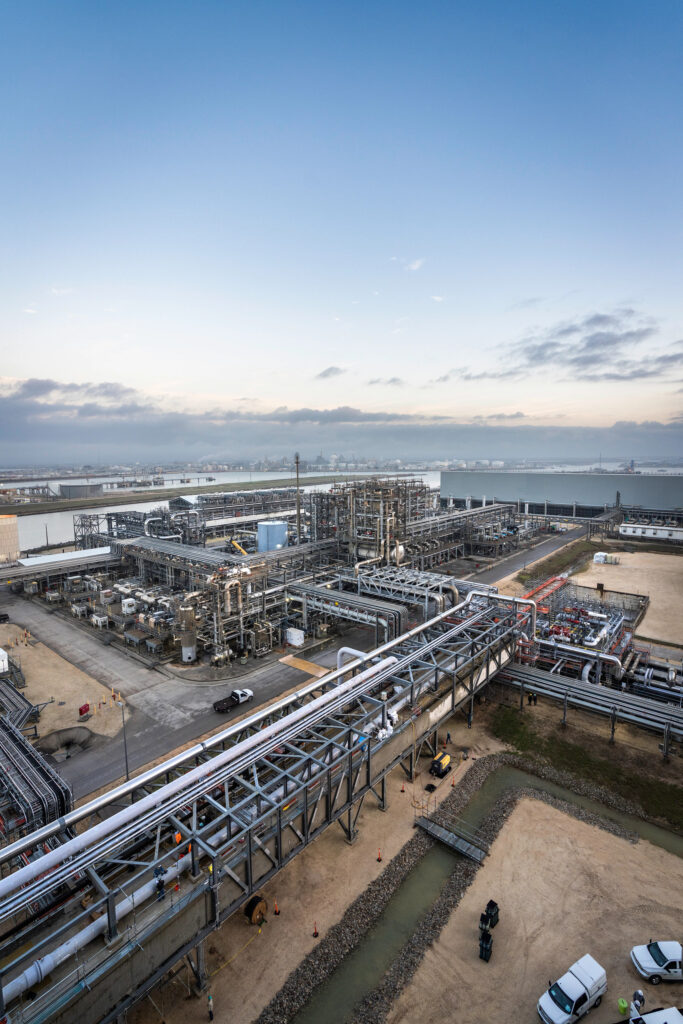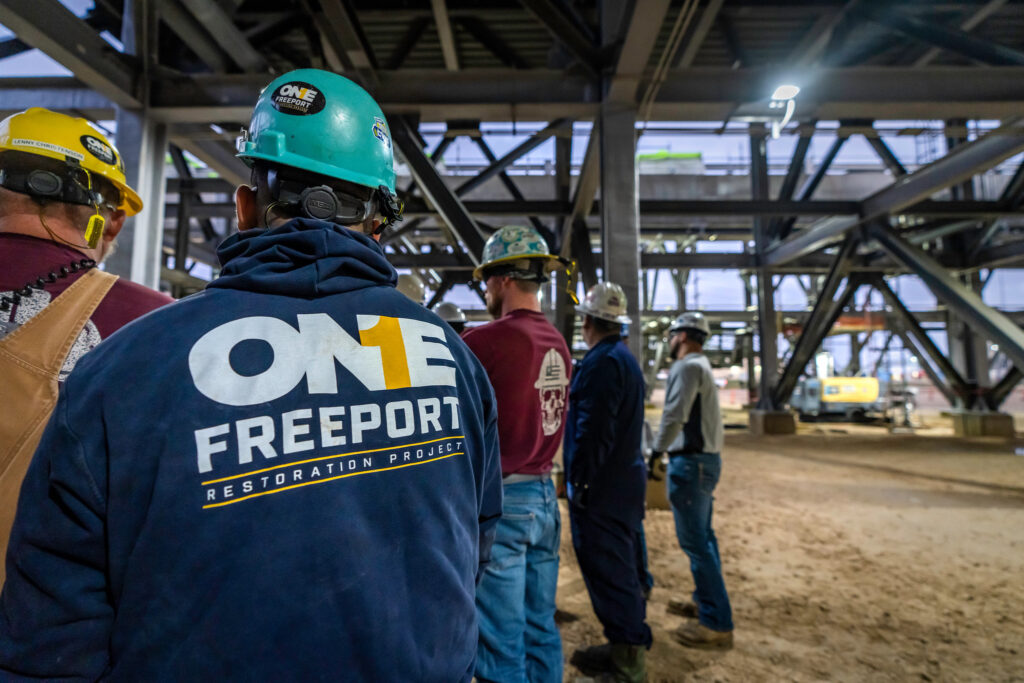When Freeport LNG Development, L.P. (Freeport LNG), needed help with a closely monitored emergency response project, it knew exactly who to turn to: Kiewit Energy Group Inc.
Kiewit was called in within days of an incident that brought operations to a halt at the natural gas liquefaction and export facility in Quintana Island, Texas.
Freeport LNG, an exporter of liquefied natural gas (LNG), reported that on June 8, 2022, an explosion and fire occurred at its liquefaction facility, forcing the facility to shut down. There were no injuries.
Within weeks of the incident, Kiewit was under contract to perform discovery work to get the facility operational again. The team was also tasked with preparing reports for government agencies overseeing the work. TIC – The Industrial Company (TIC), a wholly owned subsidiary of Kiewit Corporation, was hired as general contractor for the project.
It wasn’t by accident that Kiewit was the first company that came to mind to make the full restoration of the facility possible.
“We had developed relationships with Freeport LNG to show them our extensive engineering, procurement and construction (EPC) capabilities,” Project Director Nathan Wilson explained. “They found themselves in a situation where they needed to rapidly deploy an EPC solution and they knew we were the right solution for them because we are a one-stop shop.”
The team rose to the occasion to restore Freeport LNG’s facility, Wilson explained, by not only meeting the schedule, but also adapting to changing conditions.
“I’m extremely proud of the way they’ve handled everything — all while maintaining the client as a raving fan,” he said.
However, reaching the destination was not always a smooth ride, as the team faced more obstacles than usual due to the circumstances that led them to the project.
High Stakes for Restoration
LNG is natural gas that has been cooled to a very low temperature, around minus 162 degrees Celsius (minus 260 degrees Fahrenheit), at which point it becomes a liquid. This process reduces the volume of the gas, making it easier to transport and store.
Freeport LNG is the second largest LNG exporter in the United States and liquefies approximately 2.2 billion cubic feet of natural gas per day. According to the company, this equates to producing enough energy to power the homes of 2.5 million people for a full day.
When the facility shut down operations in June 2022, it had ripple effects throughout the world, disrupting the domestic natural gas market and the LNG markets abroad, which were already stretched as a result of the war in Ukraine.
“The team was well aware of the urgency and importance of reopening the facility, but I don’t feel like at any point they felt they were under pressure,” Wilson said. “I didn’t want the team to feel the stress and pressure because it could have led to working too fast and making mistakes.”
Rather than letting the project’s surrounding circumstances influence them, the team focused on working efficiently and prioritizing safety on-site.
Because the Kiewit and TIC teams were working with a highly flammable gas, they used pressurized welding enclosures (PWEs), which took safety to a higher level. The PWEs are structures that create a safe environment for welding when the welder needs to work around live process lines containing flammable or combustible fluids. These enclosures are pressurized with a constantly monitored flow of clean air, mitigating the risk of fires.
In addition to the PWEs, another unique aspect to the restoration work was the construction and installation of vacuum insulated piping (VIP).
VIP is a type of piping system that uses a vacuum to insulate a pipe designed to transport cryogenic liquids like LNG. The vacuum reduces heat loss and improves energy efficiency.
The project crew was new to this type of piping, which is more complex than non-vacuum insulated piping. However, Wilson praised the team’s adaptability and skilled handling of the learning curve.
“It’s a good showcase of our ability to tackle something new and rapidly learn the nuances of it,” said Wilson. “The team immediately implemented lessons learned to work more efficiently and productively.”
Timeline Delays
Project construction and restoration came with a specific requirement: getting incremental regulatory approvals from the Pipeline and Hazardous Materials Safety Administration (PHMSA) and Federal Energy Regulatory Commission (FERC). These reoccurring approval requirements introduced schedule uncertainty into the project’s timeline as they needed to be met before work could continue. Failure to obtain approval at any stage of the project would throw off the critical path of planned activities.
To timely secure the approvals, the team put in extra hours to write damage assessments and remedial plans, and engaged in intensive editing workshops to produce reports for the regulators. Once the documents were submitted, the team used the waiting period to strategize and, as necessary, resequence work to minimize impacts on efficiency and schedule.
“There were usually only 30 minutes between the time we got the email approving work and when we started the work,” Wilson said. “That speaks volumes about the quality of people we had on this project.”
David Dukat, TIC senior vice president responsible for the company’s southern operations, explained that the team used focus, determination and a high attention to safety to do everything in their power to move the project along.
“They tackled the challenge head-on, detailing the plan from day-by-day to hour-by-hour, and whenever we were released from FERC or PHMSA to execute the work, they beat the deadline every time.”
Wilson explained that project leaders set reasonable expectations as the project developed. Instead of burdening the team with unnecessary stress, they fostered innovation and maximized their use of time.
Time-Saving Alternative Approaches
The June 8 incident damaged an LNG rundown line, which is a 26-inch-wide, 1,500-foot-long pipe that carries the LNG to its storage tanks. The piping needed to be replaced to get Freeport LNG back into commercial operation.
The team ran into a problem when they found they needed to wait three months for new pipe, which would have caused a delay in the project. Instead of accepting that as fact, the team sat down with Freeport LNG representatives and together brainstormed a new solution, in the form of an old pipe. Thinking outside of the box, they realized they could take piping from a later phase of the project and use it in the rundown line to keep things moving.
“We harvested 720 feet of pipe and then had a custom piece made to connect everything together,” Wilson explained.
This idea saved the company hundreds of millions of dollars and helped restart the export of LNG 90 days sooner.
Innovation was taken a step further during pipe harvesting. To get the pipe from its location on a 40-foot-high rack would traditionally involve using bull rigging, a high-risk construction activity. Instead, Wilson explained, they developed a unique and significantly safer method to pull the spools without bull rigging.
“They came up with a plan to utilize rollers. They rigged the pipe and then set it on the first roller to roll it down the length of the rack,” Wilson said. “Our construction manager was very involved in creating a clear plan and executing that plan flawlessly. It was a great job on the team’s part to eliminate risk.”
The foremen’s meeting on the Freeport LNG project was an interactive experience each week. The typical meeting was revitalized using the Front-Line Supervisor (FLS) Safety Leadership training and development manual. The focus was not only on safety, but also developing leaders who understand the safety culture and can lead the business into the future.
The Comeback
Freeport LNG Chief Operating Officer Mark Mallett explained that with Kiewit’s help, Freeport LNG was able to resume full operations after phase one of the project, only nine months after the June 8 incident.
“Working collaboratively alongside our team, Kiewit played a vital role in the safe and successful reconstruction and restart of our liquefaction facility,” said Mallett. “The Kiewit team was comprised of highly skilled EPC workers, whose solution-minded approach to each task resulted in a safe and successful return to operations.”
Because the endeavor was so successful, Wilson believes this project could become a notable entry in Kiewit’s history book for emergency response projects.
“Everybody on the job was proud of their part in this effort to get Freeport LNG back and operational. It felt like we were not only helping the client but also contributing to a greater cause,” Wilson said.







